What is Google Analytics 4: A Beginner’s Guide
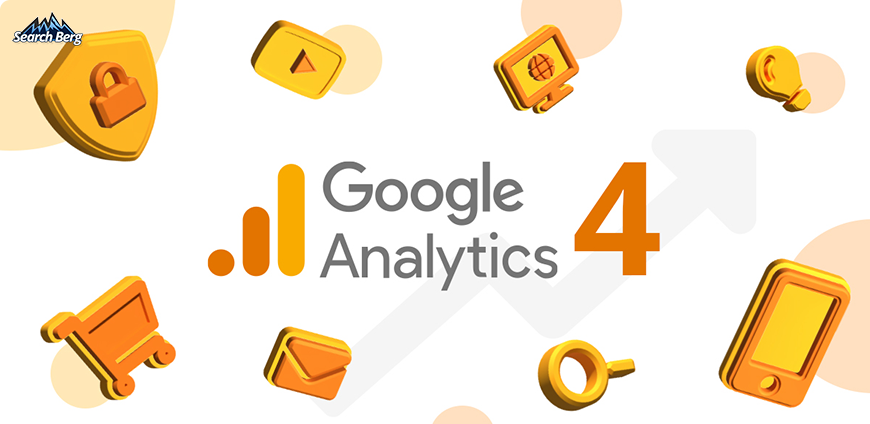
Google caused a bit of a stir by waving Universal Analytics goodbye in June 2023. But here’s the twist: Google Analytics 4 isn’t just another update. It’s like finally getting that deluxe coffee maker after years of instant coffee.
Yes, GA4 seems like a labyrinth at first glance, packed with its fancy event-based data collection and privacy settings that could make even the most seasoned marketers pause. But once you roll up your sleeves and dig in, you’ll find it’s more of an organized matrix: intuitive, insightful, and integral to the modern marketer’s toolkit.
GA4 is here to clarify, not complicate, the narrative of your data’s story.
Are you ready to explore the features, set-up processes, and best practices that make GA4 a must-have tool for modern businesses and marketing pros?We’re all set to show you the way! Let’s dive right in.
1. Introduction to Google Analytics 4 (GA4)
GA4 represents a seismic shift in how we track, understand, and engage with our audiences across digital platforms.
At its core, GA4 is a reimagined analytics platform that departs from its predecessor’s session-based data approach. Instead, GA4 embraces an event-based data model.
What does this mean?
Every user interaction with your site or app (e.g., viewing a page, liking a post, etc.) is captured as an event. This granularity allows for a more nuanced understanding of user behavior. GA4, as a result, emerges as an incredibly versatile tool that can bend and flex with the contours of modern digital behavior patterns.
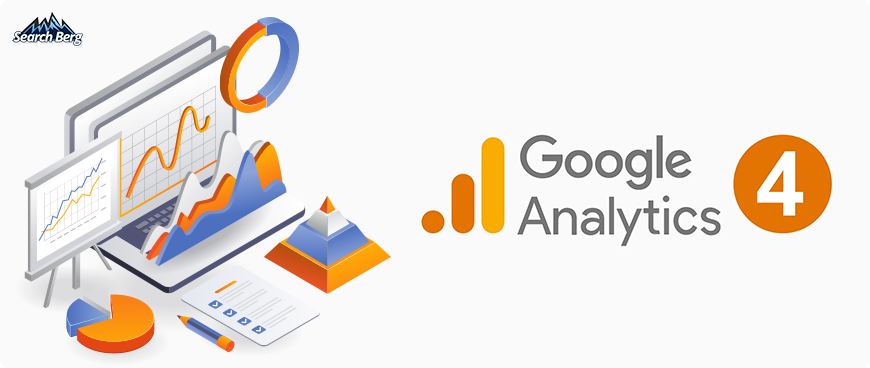
GA4’s predictive analytics capabilities are one of its crowning jewels. Powered by Google’s machine learning prowess, GA4 doesn’t just report on what’s happened; it forecasts what may happen next. It can predict which users are poised to convert and who’s at risk of churning. In fact, it can even forecast potential revenue from specific segments. This isn’t just data; it’s a crystal ball into your business’s future!
GA4 is also built with privacy at its heart. At a time when cookies are crumbling under regulatory scrutiny, GA4 offers a future-proof solution. It doesn’t rely solely on cookies. This means your analytics won’t come to a grinding halt as the web moves towards a more privacy-focused future. This is analytics that respects user privacy. It gives you peace of mind and keeps you on the right side of privacy regulations.
Now, let’s talk about integration real quick. GA4 is like the central hub in a wheel with spokes connecting to various Google services and marketing platforms. It integrates smoothly with Google Ads and allows you to fine-tune your campaigns based on your analytics data.
But it doesn’t stop there.
GA4 is designed to play nice with third-party platforms as well. Wherever your data needs to go, GA4 can send it there efficiently and effectively. Sweet, right? We think so too.
Understanding GA4 requires a shift in mindset. This isn’t just a matter of tracking page views and sessions anymore; we’re talking about understanding ‘events’ and ‘user properties.’ This may sound like a subtle shift but it’s actually pretty profound. GA4 allows you to customize the events you track. As a result, you can tailor the platform to your business’ specific needs. It’s analytics that adapts to you, not the other way around.
We’ve only scratched the surface so far. But even from this vantage point, it’s clear that GA4 is an essential ally in decoding the complex digital world. It offers depth and flexibility that UA never could. And it does this while keeping user privacy front and center.
Want to learn how to set up Google Analytics 4? We’re getting there. Continue reading!
2. The Evolution from Universal Analytics to GA4
The shift from Universal Analytics to Google Analytics 4 is like watching a black-and-white TV and then suddenly switching to 4K HDR: everything comes into sharper focus.
And no, we’re not exaggerating. That’s how exciting and significant this transition is!
Here’s what Universal Analytics looked like:
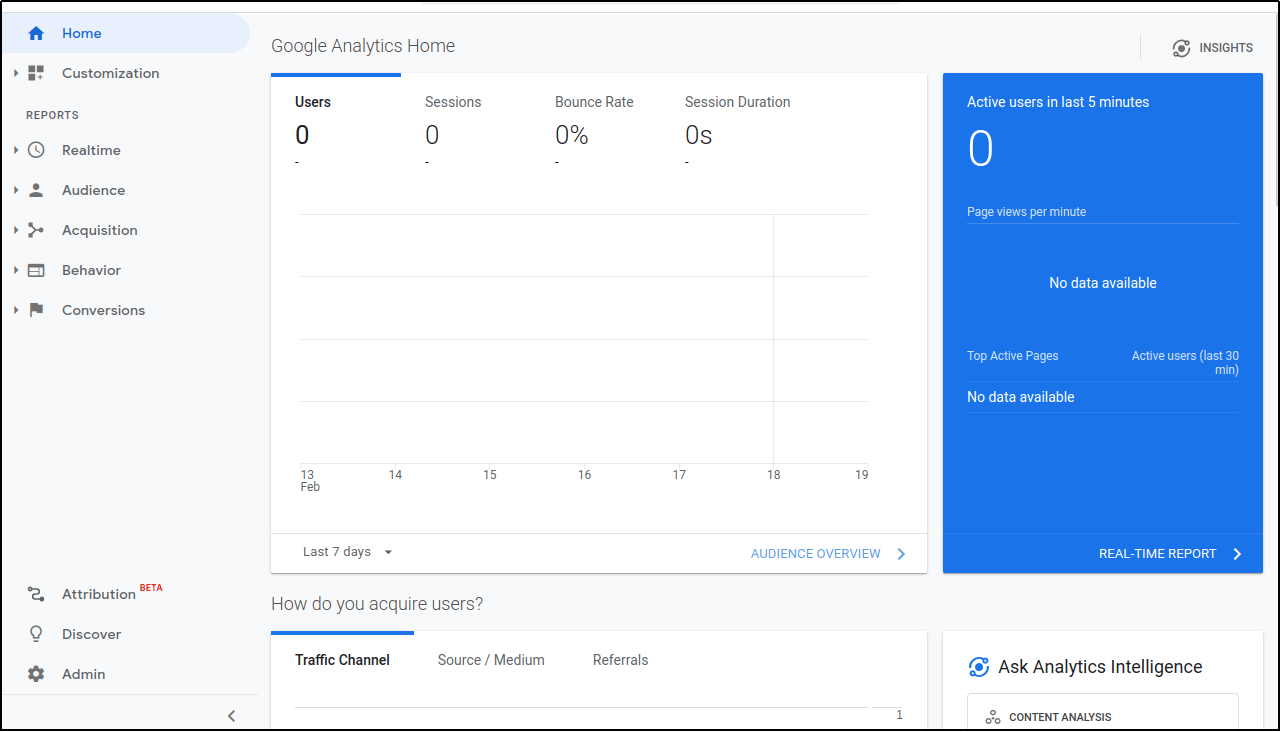
And this is what you get with the Google Analytics 4 dashboard:
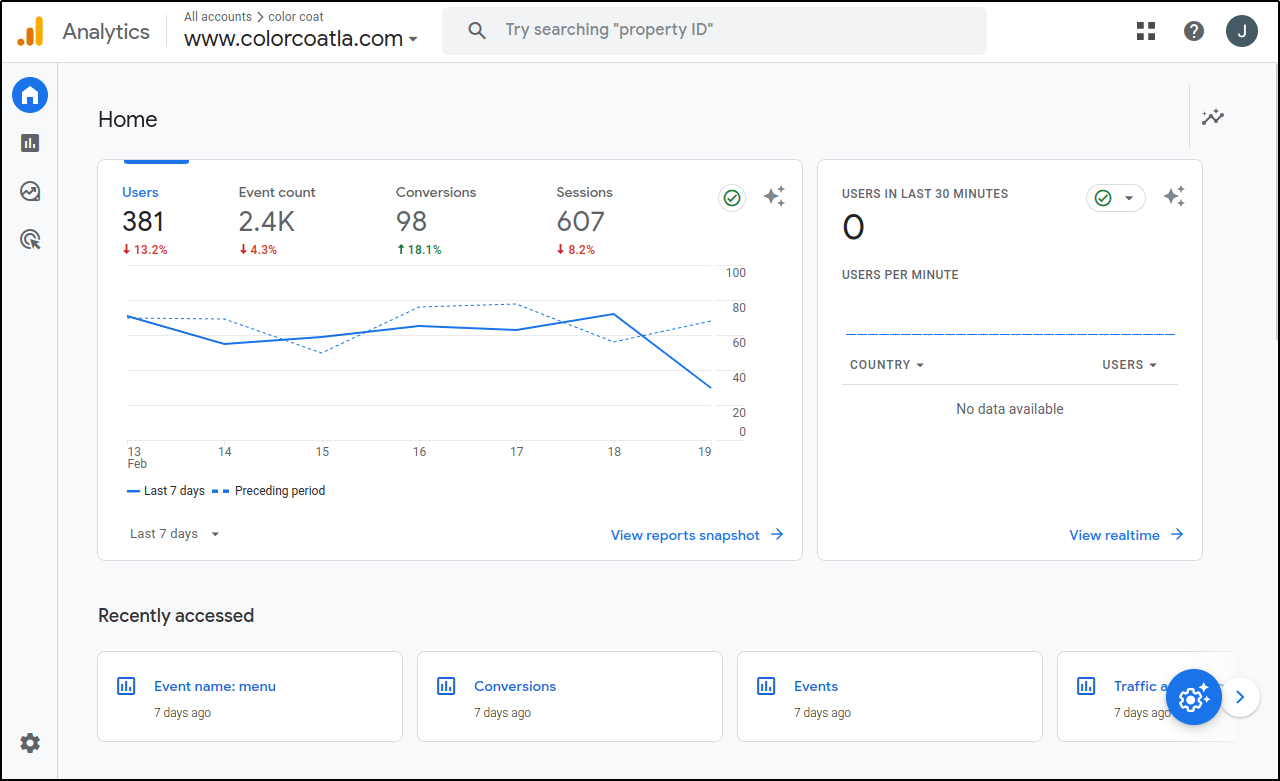
You can tell the difference right off the bat (more on this later).
But why did this evolution come about in the first place?
It’s simple: the digital ecosystem today is leagues ahead of where it was when Universal Analytics first stepped onto the scene.
Universal Analytics was born in a world where desktop reigned supreme, cookies were freely exchanged like business cards, and mobile was just a blip on the horizon. Fast forward to today, and we’re juggling multiple devices, privacy laws are reshaping the landscape, and cookies are, well, starting to crumble.
GA4 was Google’s much-needed response to a world where the only constant is change. The mighty tool is built for the ‘here and now’; it’s designed to track user behavior across apps and the web in a privacy-first era. It recognizes that the digital journey is no longer a simple path but a complex network of interactions across various channels and platforms.
So, why the upgrade? Because modern analytics requirements are very different.
We’re no longer satisfied with knowing ‘how many’ people visited our site; we want to know ‘what’ they did, ‘why’ they did it, and ‘how’ we can turn those insights into action. GA4 doesn’t just give us numbers; it gives us narratives.
The evolution to GA4 also acknowledges the limitations of data tied to cookies and sessions. Universal Analytics depended heavily on this dwindling resource, and as privacy concerns grew, it became clear a new approach was needed: one that didn’t hinge on the presence of a cookie on every user’s device.
GA4 is also incredibly proactive. It doesn’t just give you an understanding of what your users have done; it leverages predictive analytics to anticipate what they will do. This isn’t analytics for analytics’ sake; it’s analytics for action.
Universal Analytics was reactive. It churned out reports based on past data. GA4, on the other hand, is like a chess player; it always thinks several moves ahead. GA4 uses machine learning to fill the gaps where data may be missing.
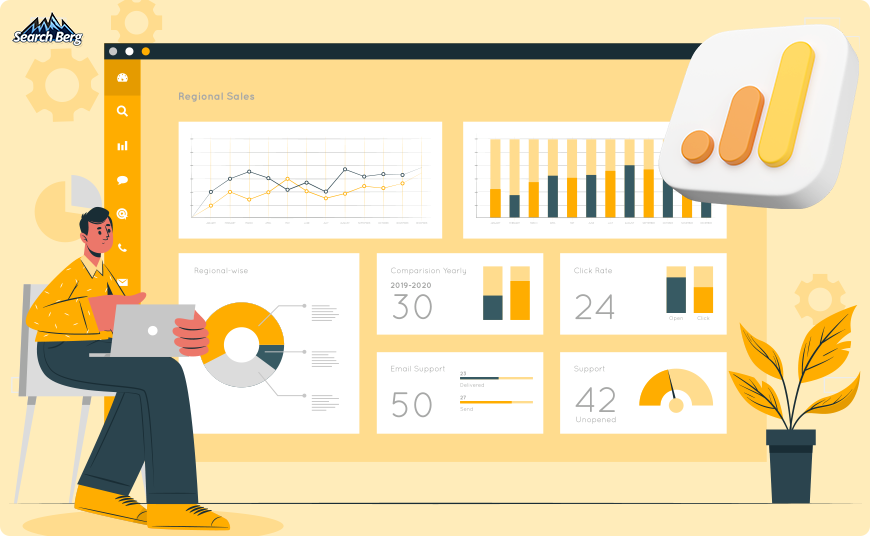
3. Key Features of Google Analytics 4
It’s time to unpack the suitcase of goodies that is Google Analytics 4 and see what’s inside. While we can’t cover every single detail (because, let’s face it, GA4 is as rich in features as a triple-layer chocolate cake is in calories), we’ll give you a rundown of its key features that are turning heads and flipping the analytics game on its head.
3.1. Event-Based Tracking
Forget about sessions; GA4 is all about events. Every interaction users have with your site is tracked as an event. This means you get a play-by-play of their journey. It’s like tracking the breadcrumbs users leave behind, but instead of breadcrumbs, it’s digital footprints: less messy and far more useful. Let’s dive into what makes this feature a powerhouse for modern analytics.
Automatically Collected Events
GA4 smartly snags certain user interactions without you having to lift a finger. This includes the basics like ‘first_visit’, ‘session_start’, and ‘page_view’. It’s the foundation of your event data; enjoy a collection of pivotal moments of user engagement automatically.
Enhanced Measurement Events
Turn on ‘Enhanced Measurement’ in GA4, and you’ll open the doors to tracking interactions like scrolls, outbound clicks, site searches, and video engagement. Imagine having a stealthy analytics ninja that tracks every action users take with your content. That’s what ‘Enhanced Measurement’ does. It’s configurable right within the GA4 interface; you can pick and choose which interactions are worth your attention.
Recommended Events
These are GA4’s suggestions for events that suit your specific business needs. From eCommerce actions like ‘add_to_cart’ to lead gen steps like ‘sign_up’, these events are designed to give you richer insights. They’re predefined for ease of use but can be implemented according to your unique requirements.
Custom Events
This is where GA4 offers full creative control. Custom events are your playground. They can be anything from tracking a ‘Buy Now Pay Later’ button click to monitoring specific promotions. They require a bit more legwork and can be set up through the GA4 interface or with Google Tag Manager (GTM). This flexibility is like having a wild card in a game. You can tailor this feature to track virtually any user interaction that matters to your business.
Enhanced Measurement in Detail
‘Enhanced Measurement’ in GA4 automatically captures a wealth of user interactions like file downloads and video engagement. The file_download event, for example, is triggered when a user downloads content. Video engagement measures actions like video starts, completions, and watch duration. To get these events rolling, you simply need to toggle them on in the GA4 interface under ‘Data Streams’. It’s like flipping a switch to shine a light on how users interact with your content.
These features collectively ensure that GA4 dissects every interaction to give you a granular understanding of user behavior. The system’s flexibility and depth of insight make it a critical tool for marketers and business owners who want to stay ahead of the curve.
3.2. User-Centric Data Models
The transition to Google Analytics 4 represents a massive shift in how user data is captured and analyzed. Unlike its predecessor, GA4 adopts a user-centric data model, which means it focuses on the user’s journey across different devices and platforms rather than just looking at isolated sessions or pageviews.
GA4’sactive user counting methodology is one of the core features of its user-centric model. The tool ensures that each user is only counted once regardless of how many times they visit or interact with a page. This approach provides a more accurate representation of user engagement and avoids the double counting that could skew data in Universal Analytics.
This shift to a user-centric model allows for a more nuanced understanding of user behavior. It gives marketers and businesses insights into the entire customer journey and helps them make more informed decisions .
Let’s also note that GA4’s user-centric data model is designed to be privacy-forward. This is in line with the contemporary emphasis on user privacy and regulatory compliance.
In practice, this means that when analyzing data in GA4, you’ll be able to stitch together a narrative of a user’s interactions with your brand starting from the first touchpoint all the way to the latest conversion. It’s a holistic analytics approach that prepares businesses for a future where understanding cross-platform user behavior has become essential.
3.3. Flexible and Customizable Reports
GA4’s flexible and customizable reports are a significant step up from what was available in Universal Analytics. Instead of being confined to pre-set reports, GA4 allows users to dive deep into their data with a suite of dynamic reporting features.
One of the central elements of GA4 reporting is the ‘Freeform Report’ within the ‘Explorer’ section. It gives you the ability to start from scratch and select the specific dimensions and metrics that are most relevant to your business needs. This means you can craft a report that’s tailored precisely to your unique analytical requirements (whether you’re looking to delve into user behavior, conversion paths, or specific user interactions on your site or app).
‘Funnel Analysis’ in GA4 is also a game-changer, especially for businesses focused on understanding the user journey in its entirety. It allows for a detailed examination of the steps users take toward conversion or purchase. You’ll walk away with valuable insights into where users are dropping off or converting.
‘Path Exploration’ goes even further by analyzing user journeys based on events or page views. It highlights how users interact with your site or app over time.
Customization extends to the ability to create reports that align with your specific business goals. GA4 allows you to drag and drop different elements into your reports; you get complete control over how data is presented. You can add dimensions to rows or columns depending on your needs and even filter data directly from the report graph for more precise analysis.
GA4’s advanced report types, like’Cohort Exploration’ and ‘User Lifetime’ reports, provide a rich understanding of user behavior over time. These insights can be further enriched by GA4’s AI capabilities.
With GA4’s integration with Google BigQuery (more on this later), users can handle large datasets, perform more complex analyses, and then send this data to visualization tools like ‘Looker Studio’ for comprehensive reporting. This connection to BigQuery was previously only available to enterprise-level users in Universal Analytics but is now free for GA4 users. It opens up exciting new possibilities for data analysis and insights.
To make the most of GA4’s reporting capabilities, familiarize yourself with the platform’s features and understand how they can be customized to meet your analytical objectives. GA4’s new reporting framework is designed to provide a more nuanced understanding of digital interactions.
Hire SEO services to leverage these features effectively. Expert SEO service providers will help transform the way your business gathers and acts upon data insights.
3.4. Cross-Platform Analysis
Cross-platform analysis takes the understanding of customer journeys to new heights. It helps businesses glean actionable insights across different digital platforms.
This is a pivotal shift from Universal Analytics’ more siloed and session-based approach. With GA4, every interaction a user has across your web and app platforms is brought into a cohesive analysis. This means you get a deeper understanding of the multi-faceted consumer interactions that define today’s omnichannel experiences.
GA4’s ability to amalgamate data across platforms forms a unified data ecosystem (essential for businesses that operate both websites and mobile applications). This integration across different analytics tools provides a 360-degree view of customer interactions. It helps businesses craft more personalized marketing strategies.
For instance, a retail brand can analyze customer interactions across its website, mobile app, and social media platforms to create a cohesive marketing strategy that offers a consistent brand experience across all channels.
In practical terms, this means that GA4 allows you to analyze how users move from your mobile app to your website, or vice versa, and how these interactions contribute to conversions. It also means you can track a user’s interactions across various sessions and platforms and connect all the dots from the first touchpoint to conversion (regardless of where and how these occur).
To make the most of GA4’s cross-platform analysis, businesses need to implement consistent tracking codes across all digital assets and define custom events that reflect critical touchpoints in the user journey. By doing so, marketers can capture detailed data about user interactions, which is essential for a comprehensive analysis of the user journey and for optimizing strategies to drive meaningful engagement.
Look into search engine optimization services. SEO professionals will comfortably take the reins and help you do justice to this powerful tool.
3.5. Predictive Metrics
GA4 has elevated the analytics game by introducing predictive metrics, which leverage Google’s advanced machine learning technologies to forecast future user actions based on their past interactions with your site or app.
These predictive capabilities are instrumental in shaping data-driven marketing strategies and optimizing user engagement for improved ROI.
Key Predictive Metrics in GA4
GA4 offers several predictive metrics; each is designed to provide insights into potential future user behaviors:
- Purchase Probability: This metric predicts the likelihood that users who have visited your site or app will make a purchase within the next seven days. It helps identify users at the brink of conversion and allows marketers to target them more effectively with personalized campaigns.
- Churn Probability: ‘Churn Probability’ estimates the likelihood that users active on your app or website in the last seven days will not return in the next seven days. This metric is essential for identifying users at risk of churning. You can then enable targeted re-engagement strategies to retain them.
- Revenue Prediction: ‘Revenue Prediction’ forecasts the expected revenue from all purchases within the next 28 days from users who were active in the last 28 days. This predictive metric is invaluable for estimating future revenue and identifying high-value user segments.
Utilizing Predictive Metrics for Strategic Advantage
GA4 allows the creation of predictive audiences based on these metrics, which can be used to tailor marketing efforts more precisely.
For instance, you can segment users likely to make a purchase in the next seven days and target them with special offers or reminders.
Similarly, identifying users at risk of churning enables you to engage them with personalized content or offers to encourage their return.
Prerequisites for Activating Predictive Metrics
To effectively leverage predictive metrics in GA4, certain prerequisites need to be met, including a minimum number of positive (e.g., purchasers) and negative (non-purchasers) samples to train the machine learning models. Regular traffic and engagement data are essential for maintaining the quality and accuracy of these predictive models.
Practical Applications of Predictive Metrics
Predictive metrics can be applied in various ways, e.g., optimizing marketing campaigns, enhancing user experiences, and so on.
For example, eCommerce platforms can use ‘Purchase Probability’ to identify and target users most likely to convert. This can help them potentially increase conversion rates and revenue.
Similarly, content publishers can use ‘Churn Probability’ to identify and re-engage users who are losing interest. As a result, they can improve user retention rates.
3.6. Audience and Segmentation
In GA4, audience and segmentation features offer a robust framework for understanding user behavior and tailoring marketing strategies accordingly. The platform allows you to create segments and audiences based on user interactions.
Segments in GA4 are versatile; they allow for the creation of user, session, and event segments based on specific criteria. This feature helps you analyze data in a nuanced way; you can tailor your analysis to the specific actions or behaviors of interest.
For example, you can segment users based on a form submission during their first session or track all instances of a specific event, like video views or link clicks, within a particular session.
The flexibility of GA4’s segment builder, with its OR/AND conditional logic and sequence options, adds depth to your data analysis.
Audiences in GA4, on the other hand, start collecting information from the moment of creation and are not retroactive like segments. You can create audiences based on technology use, e.g., device type, browser, or acquisition channels. This helps in troubleshooting technical issues, assessing campaign effectiveness, and optimizing user experiences across different platforms.
Predictive audiences, a standout feature of GA4, leverage machine learning to forecast user behaviors like purchasing or churning .
The process of creating, editing, duplicating, and deleting audiences in GA4 is pretty straightforward. Once set, GA4 continuously updates these audiences, adding or removing users based on their behaviors. This dynamic approach ensures that your marketing efforts are always targeted at the most relevant user segments.
GA4 audiences play a critical role in optimizing marketing efforts, tracking user journeys across devices and platforms, and identifying high-value channels and customer segments. The ability to create custom audiences or utilize suggested and predictive audiences enhances the precision of marketing campaigns. This can ultimately improve your return on ad spend (ROAS) and campaign ROI.
3.7. Enhanced Integration with Google’s Ecosystem
Google Analytics 4 significantly enhances integration within Google’s ecosystem. Doing so fundamentally changes how businesses can track, analyze, and leverage user data across platforms.
Here’s a breakdown of key integrations and benefits based on the insights gathered:
- Unified Data Streams: GA4 introduces the concept of data streams to integrate user data across websites, Android apps, and iOS apps within a single property. This allows for a holistic view of the user journey across different platforms. Why is this important? Because it helps you understand cross-platform engagement and behavior.
- Measurement ID and Google Signals: To enable accurate data collection and analysis, GA4 uses a ‘Measurement ID’; this is critical for tracking web data stream performance. Activating ‘Google Signals’ is also pivotal; it enhances cross-device reporting accuracy and enables cross-device remarketing audiences. This integration facilitates more precise audience targeting and engagement strategies.
- Data Retention and BigQuery Integration: GA4 offers flexible data retention options. The integration with BigQuery opens up advanced data analysis opportunities. Businesses can store and analyze vast amounts of GA4 data alongside other data sources. This integration provides a robust infrastructure for deep insights, predictive modeling, and comprehensive reporting.
- Enhanced Conversions and Privacy Compliance: In anticipation of third-party cookie depreciation, GA4 introduces features like the ‘Protected Audience API’ and enhanced conversions. These advancements support privacy-compliant remarketing and improve conversion tracking accuracy by utilizing first-party data and ensuring adherence to data privacy standards.
- Salesforce Integration: GA4’s integration with ‘Salesforce’ marks a significant upgrade. It offers richer insights into customer journeys and enables more effective digital marketing automation. By tracking user behavior across multiple devices and automating CRM processes, businesses can optimize campaigns, increase conversions, and automate mundane tasks. The outcome is a seamless link between analytics data and CRM operations.
By leveraging GA4’s enhanced integration with Google’s ecosystem, businesses can unlock new levels of insight and efficiency in their digital marketing strategies. This is where turning to the professionals becomes necessary. Instead of taking things into your own hands, turn to professional SEO services.
4. How to Set Up Google Analytics 4
Setting up GA 4 is essential for businesses looking to harness the latest in web analytics capabilities.
Here’s a consolidated step-by-step guide to help you breeze through the setup process:
- Create a GA4 Property: Start by navigating to the ‘Admin’ section of Google Analytics and click ‘Create Property’. Unlike Universal Analytics, GA4 doesn’t use ‘views’. This helps streamline data management at the property level.
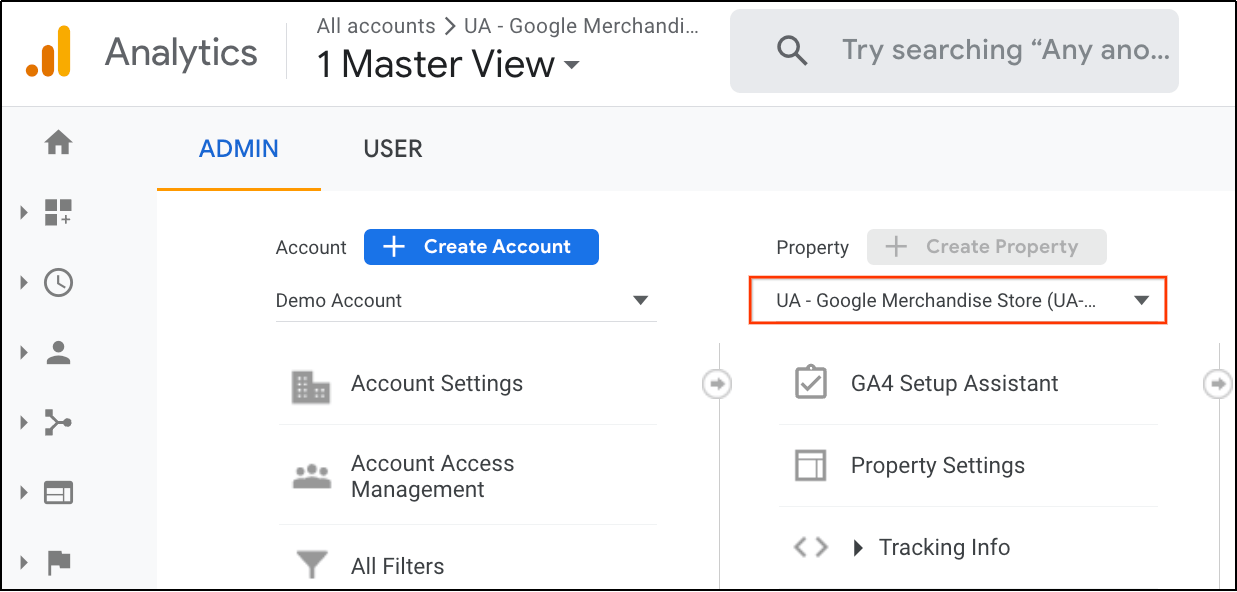
- Name Your Property: After creating a new GA4 property, you’ll be prompted to provide information, e.g., the property name. This step is straightforward and essential for organizing your analytics assets.
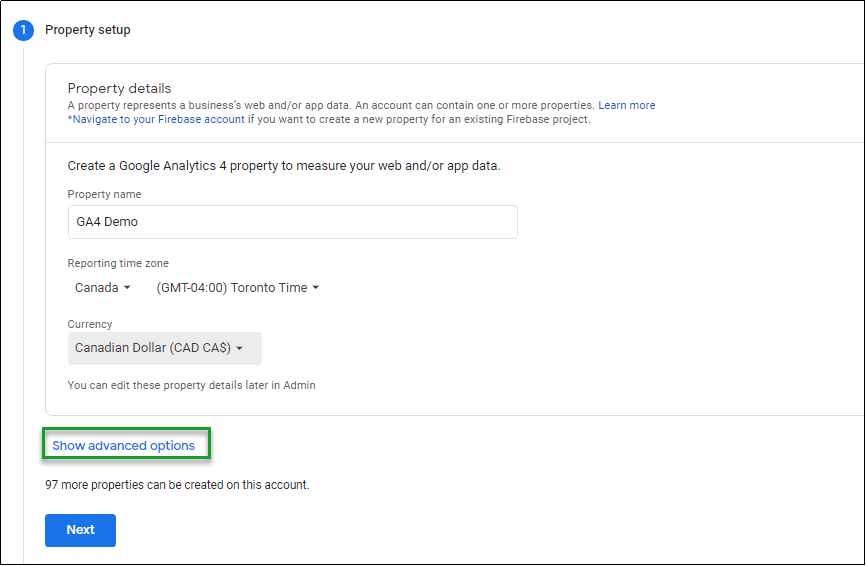
- Create a Web Data Stream: With your account ready, the next step involves creating a data stream to determine how data is sent into your GA4 instance. GA4 allows for the collection of data from multiple sources. It offers flexibility with up to 50 data streams for websites. Exciting, isn’t it?

- Find Your Measurement ID: Post-stream creation, locate your ‘Measurement ID’ in the stream settings. This ID is vital for implementing GA4 tracking on your site.
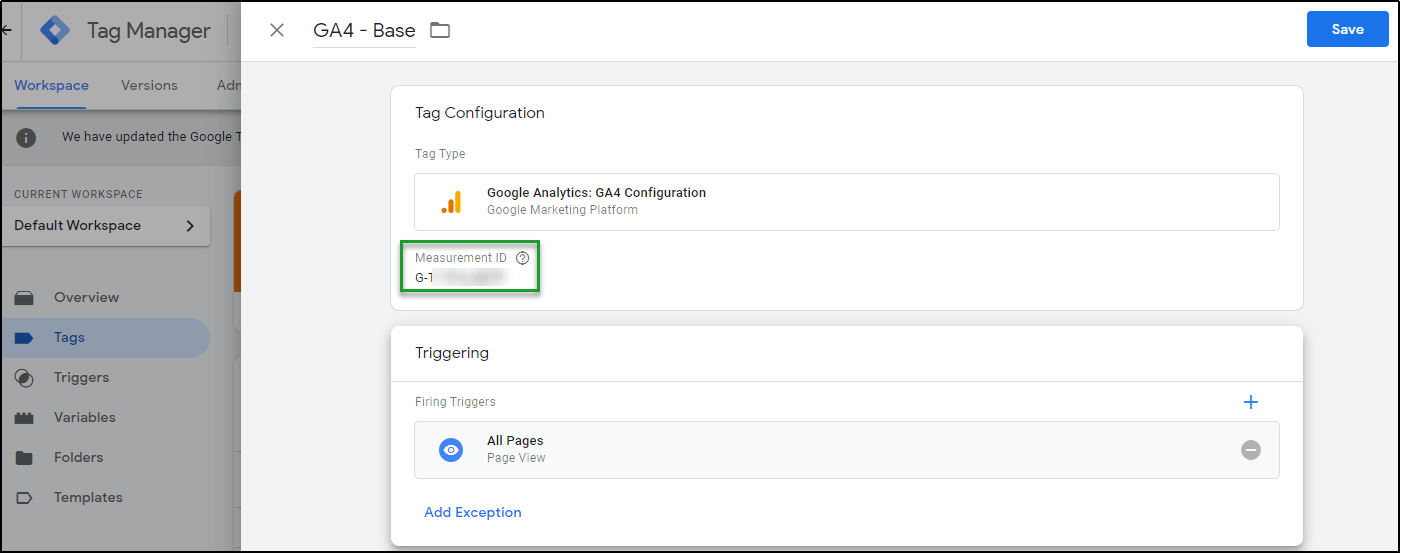
- Configure Events and Conversions: In GA4, configuring events relevant to your business goals is essential for monitoring user engagement. Utilize ‘Enhanced Measurement’ for automated tracking of user interactions like site searches and video plays.
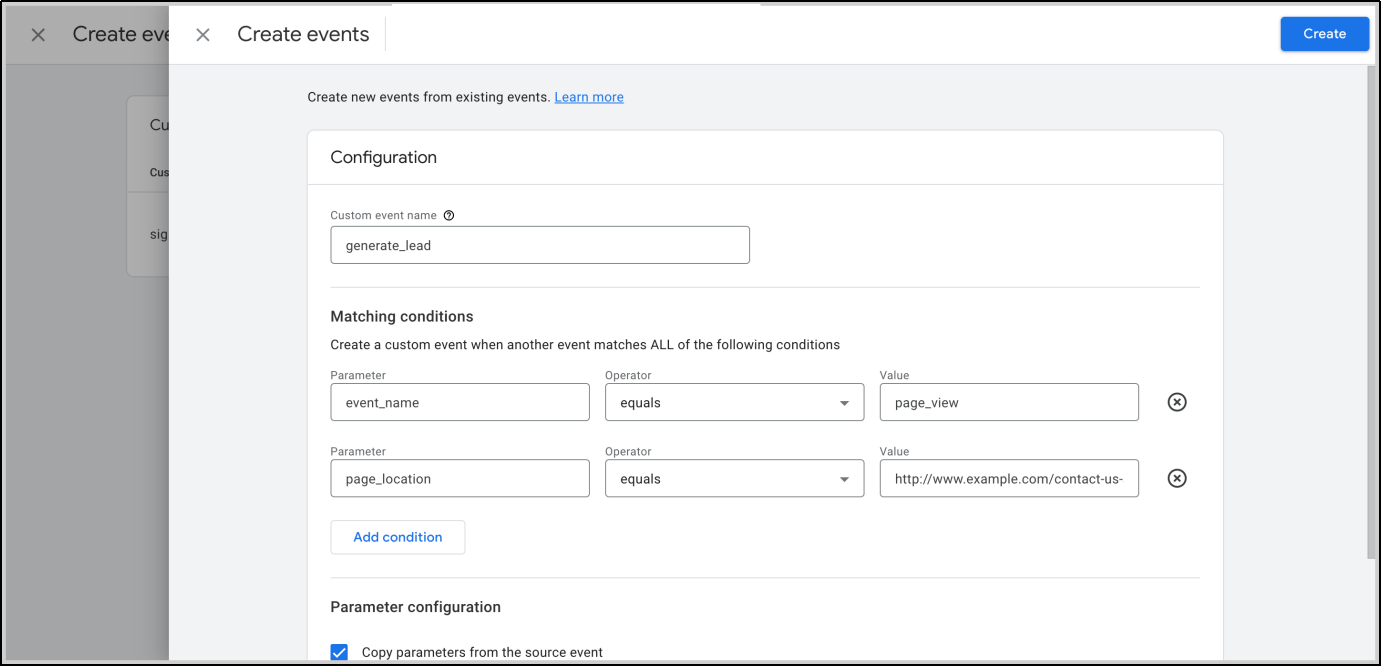
- Utilize Custom Dimensions and Metrics: Implement custom dimensions and metrics to segment and analyze data based on criteria specific to your business needs.
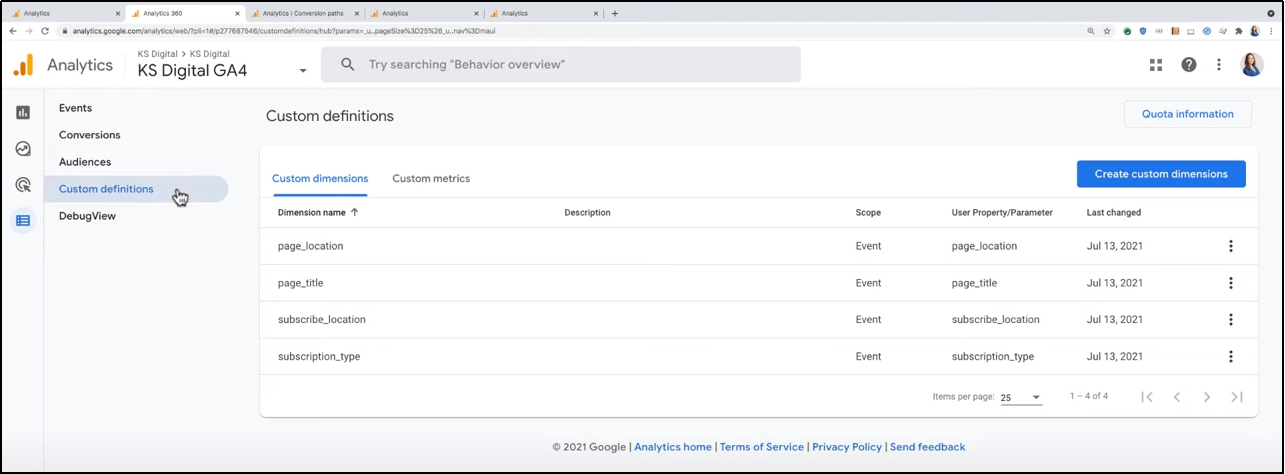
- Analyze Reports and Gaining Insights: Once your GA4 setup is complete, dive into the range of reports available to make data-driven decisions and improve your online performance.
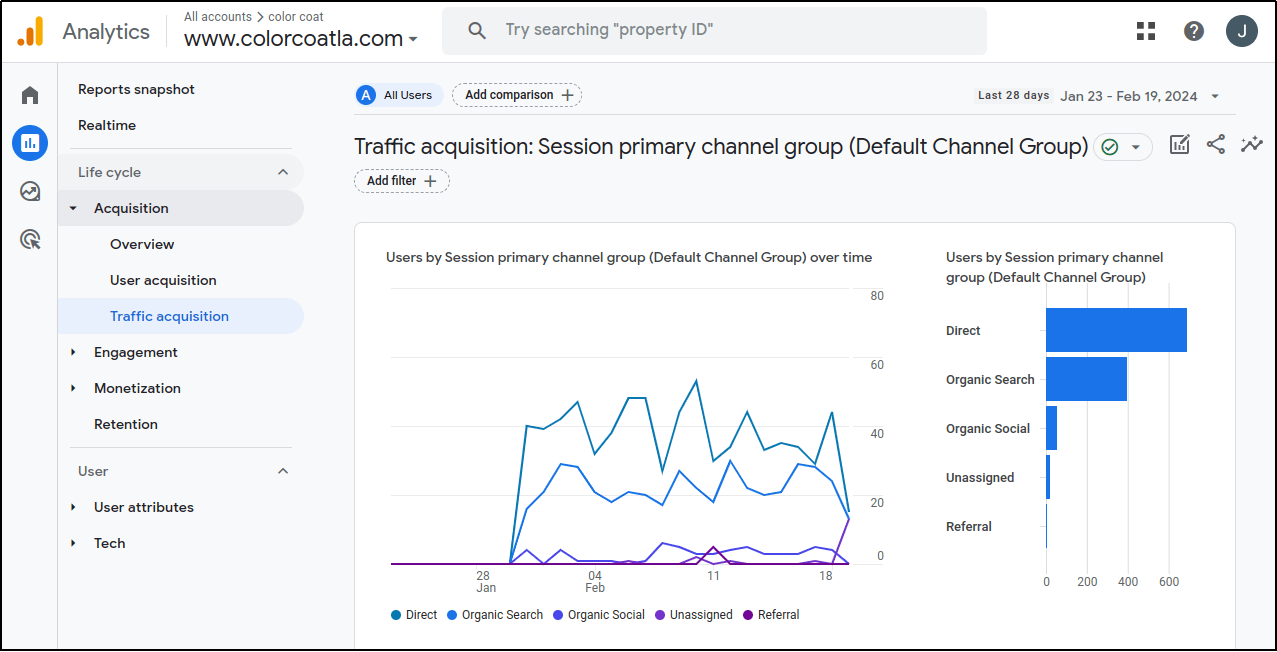
It’s also important to consider the method of setting up GA4 (especially for those migrating from Universal Analytics).
The GA4 Setup Assistant offers a simplified process for existing Google Analytics account owners. You can create a new GA4 property that mirrors your existing Universal Analytics property. This dual data collection ensures continuity and allows for a smooth transition.
For tracking events, GA4 introduces a more dynamic and comprehensive approach. It categorizes events into automatically tracked events, enhanced measurement events, recommended events, and custom events. This flexibility ensures that businesses can tailor their tracking to capture the most relevant user interactions across their digital platforms.
5. How to Set Up Goals in Google Analytics 4
To create goals in GA4, you’ll primarily utilize the platform’s event and conversion tracking features.
Here’s a distilled guide to get you started:
- Navigate to ‘All Events’ in GA4: Select your property and head to the ‘Events’ section. This area is where GA4’s flexible event-based model shines!
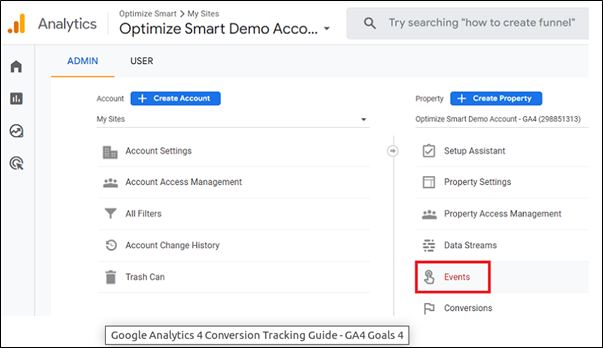
- Utilize Google Tag Manager or GA4 Dashboard: For setting up goals, you can either use ‘Google Tag Manager’ or directly utilize the GA4 dashboard. You have two pathways depending on your preference for hands-on control or streamlined dashboard operations.
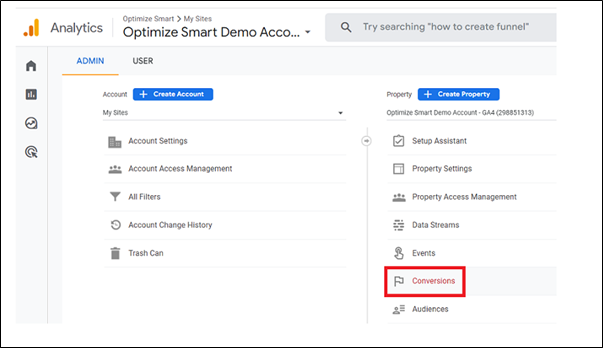
- Select ‘Create Event’ in the GA4 Dashboard: If you’re opting to set up goals within GA4, select ‘Create Event’ under the ‘Events’ tab and proceed to customize your event parameters. You’ll be required to define the event name and specify matching conditions to accurately track desired user actions, e.g., page views, form submissions, etc.
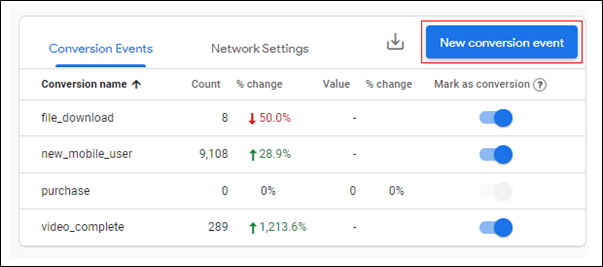
- Mark Events as Conversions: Once your custom event is created and triggered, you have the option to mark it as a conversion. You can then track these events as goals. This step is critical for monitoring how effective your website or app is in driving desired user actions.
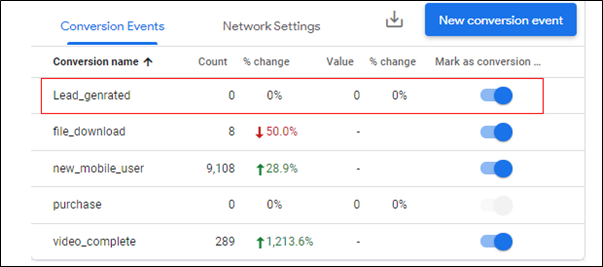
- Analyze and Verify Goal Performance: With goals set up as conversions, you can delve into GA4’s ‘Conversions’ tab under ‘Reports’ to analyze the performance of these tracked actions. This insight is invaluable for understanding user behavior and optimizing your digital strategies accordingly.
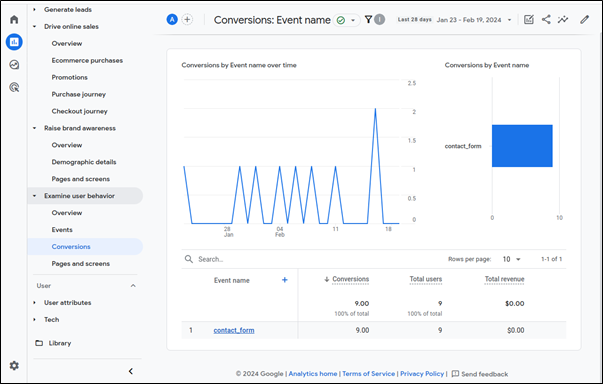
- Leverage Goal Templates for Quick Setup: GA4 offers several goal templates for common actions like purchases and form submissions. This helps simplify the setup process. Choosing a template that aligns with your tracking objectives can streamline the configuration of goal details.
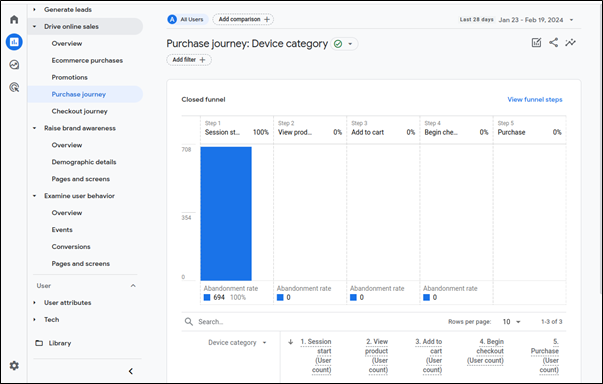
- Verify Goal Setup in Realtime: To ensure your goals are correctly tracking, perform a test action on your website and check the ‘Realtime’ section in GA4. Successful tracking will be reflected in these real-time reports.
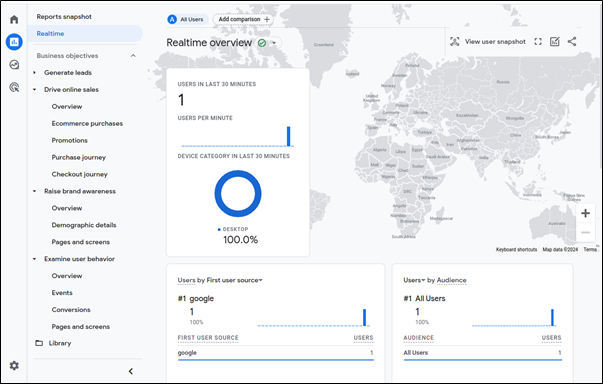
- Optimize with Custom Events and Funnel Visualization: For advanced tracking, consider setting up custom events to capture specific user interactions. Additionally, funnel visualization can help identify potential drop-off points in the user journey.
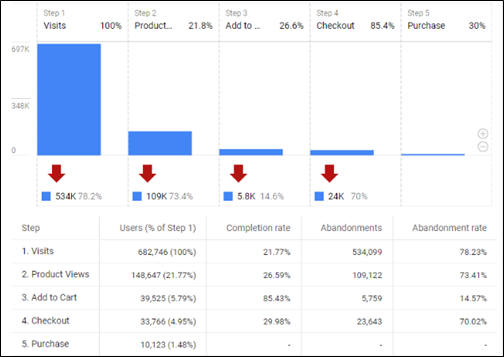
Setting up goals in GA4 requires a strategic approach to define and track the actions most critical to your business’s success. Hire SEO services to ensure you get things right the first time around.
Start Working with Search Berg!
Stepping into the world of Google Analytics 4 without a seasoned guide is like trying to crack a code without the cipher.
Sure, it’s possible, but why make it harder than it needs to be?
At Search Berg, we like to think of ourselves as the digital marketing world’s cryptographers. We’re ready to decode GA4’s complexities to your business’s advantage.
Using our expertise, precision, and a sprinkle of SEO magic, we transform raw data into strategic gold. GA4 shouldn’t just be used to collect information. You must also master the art of utilizing that information to drive decisions, strategies, and, ultimately, success. That’s where professional SEO teams come in.
With Search Berg’s search engine optimization services, you get analytics with intent. We transform what might seem like a maze of numbers and charts into clear strategies that propel your business forward.
Are you ready to get started? Explore our SEO services to understand how we can benefit your business. Once you’re ready, schedule a free consultation with our professional SEO service providers. It’s time to give your business the boost it deserves!












